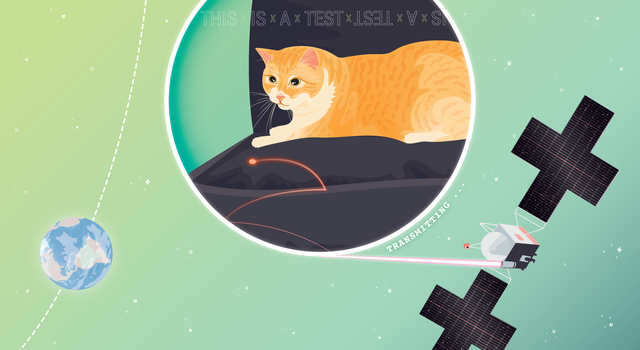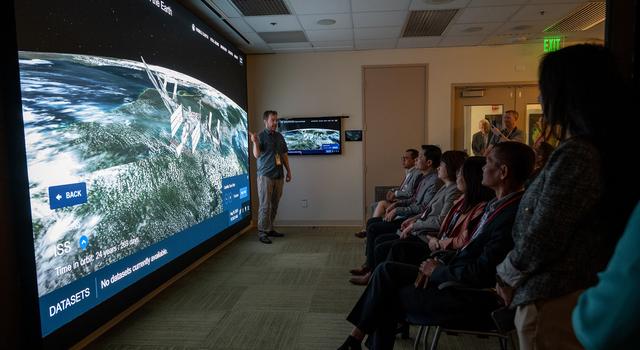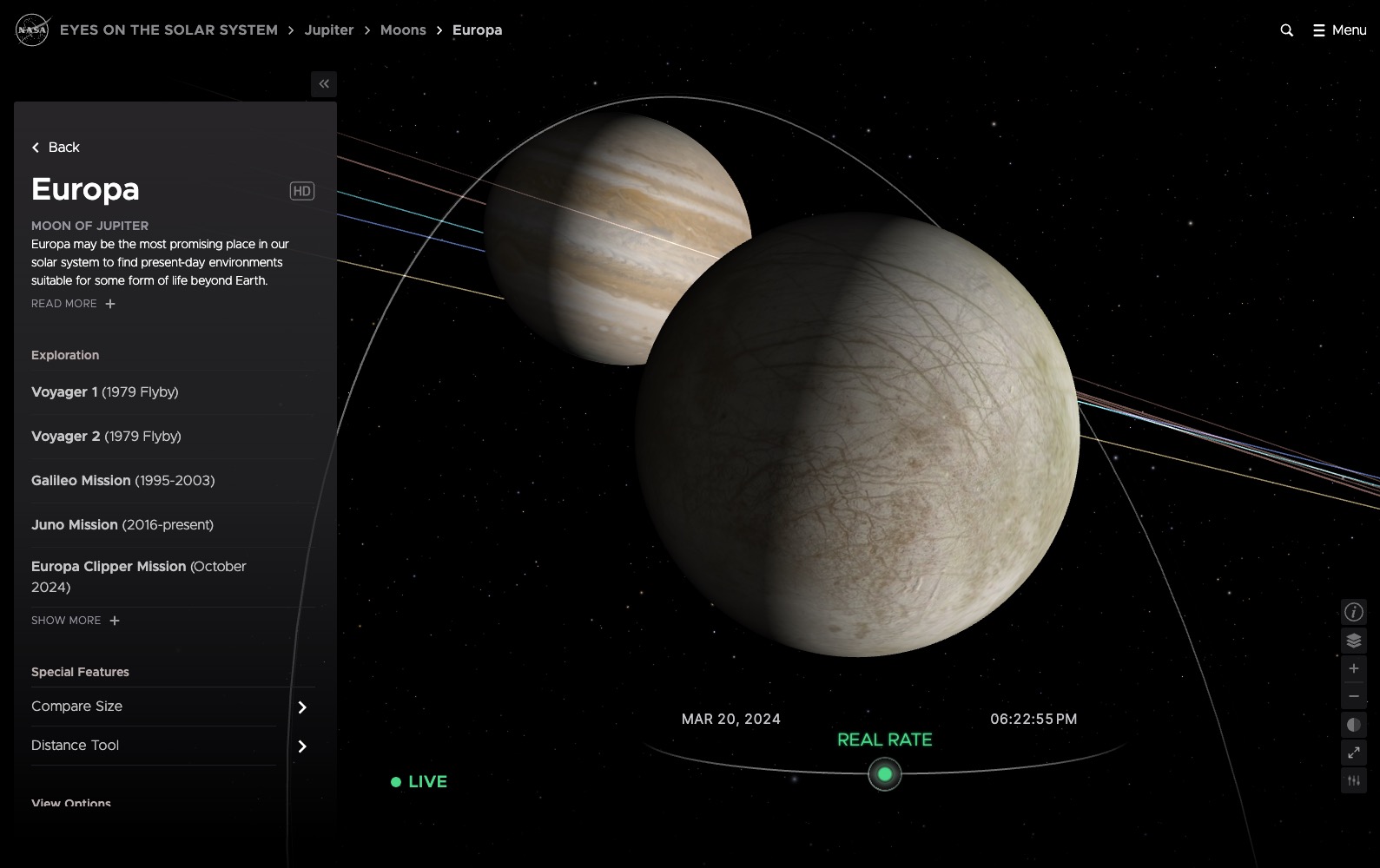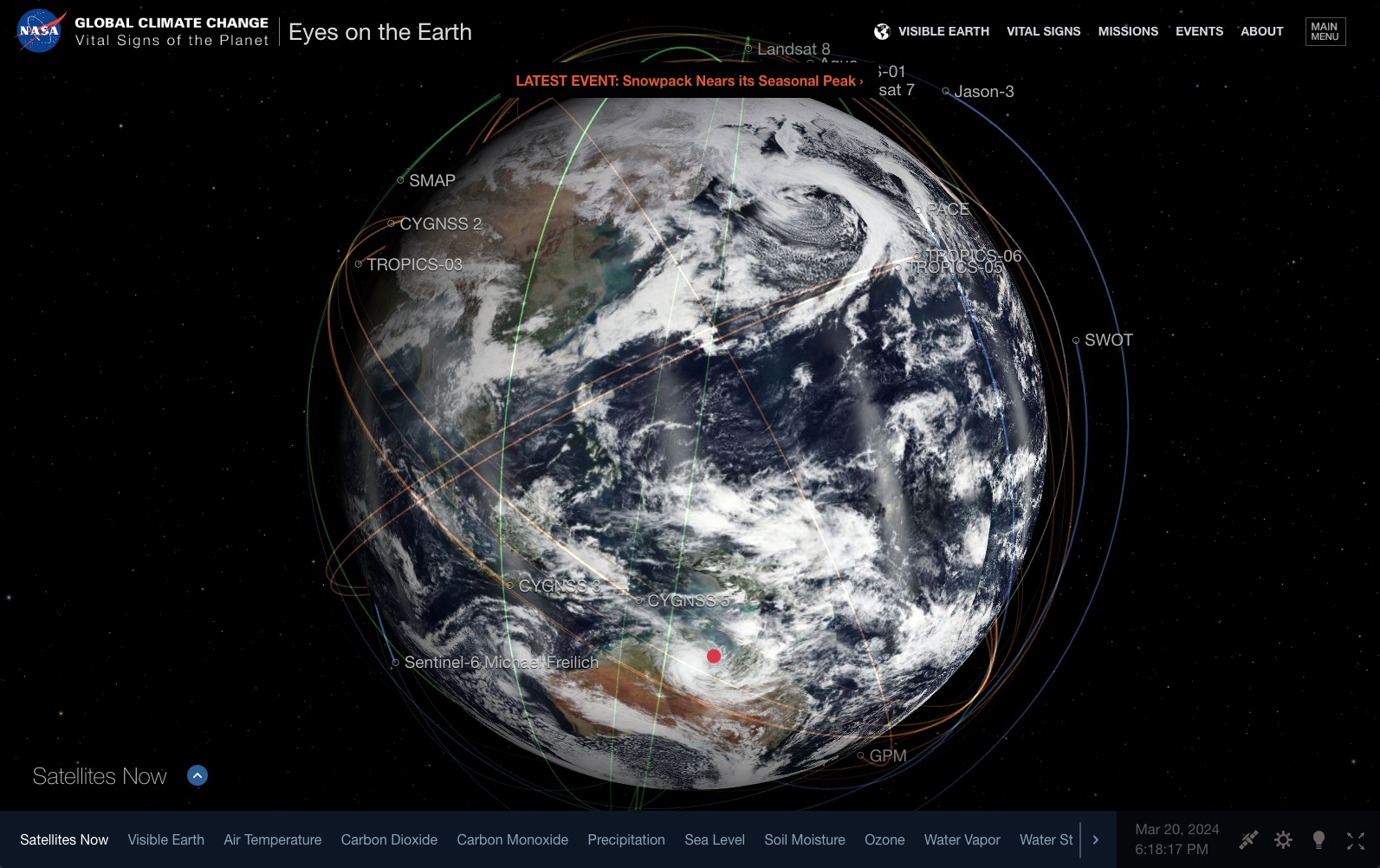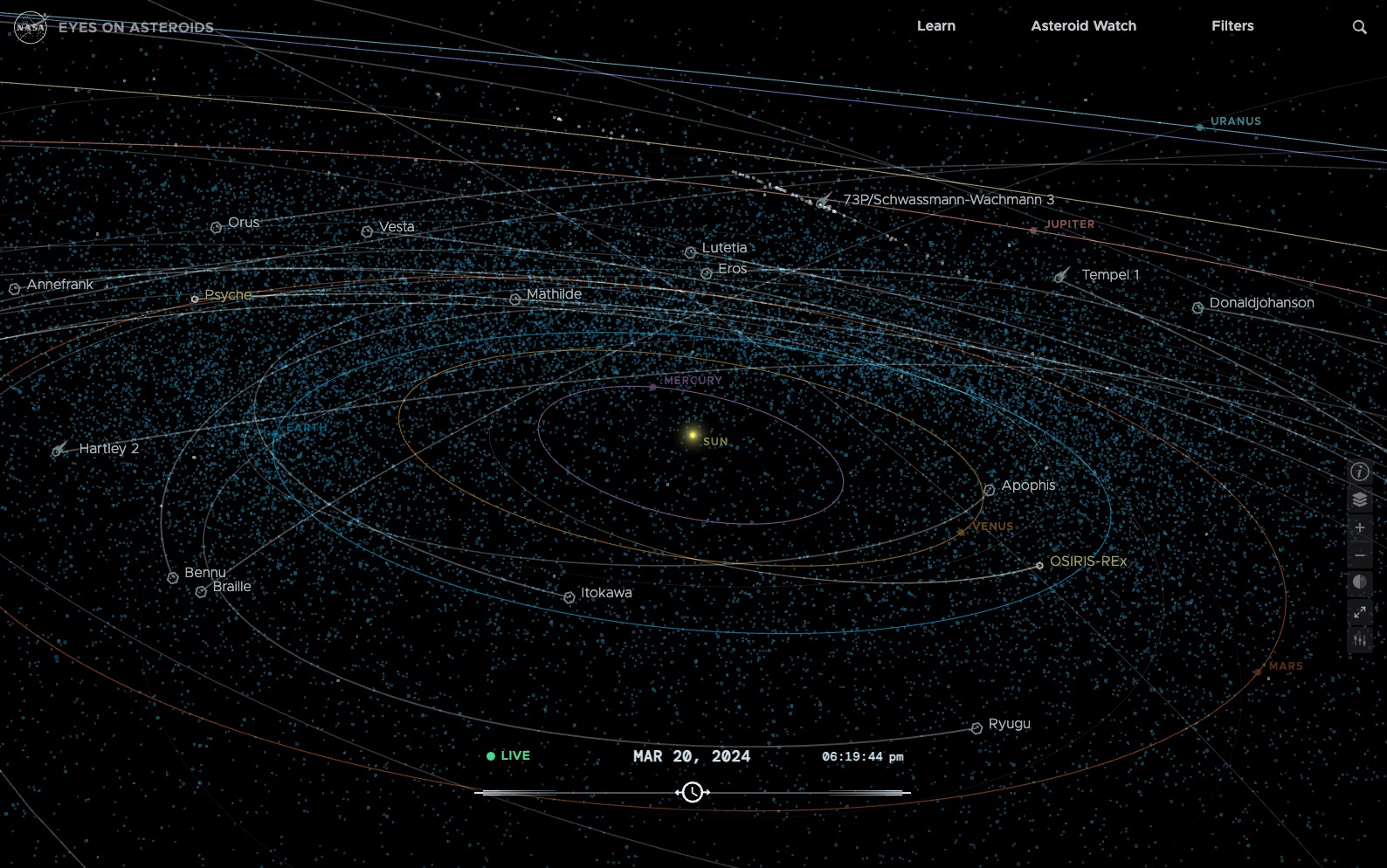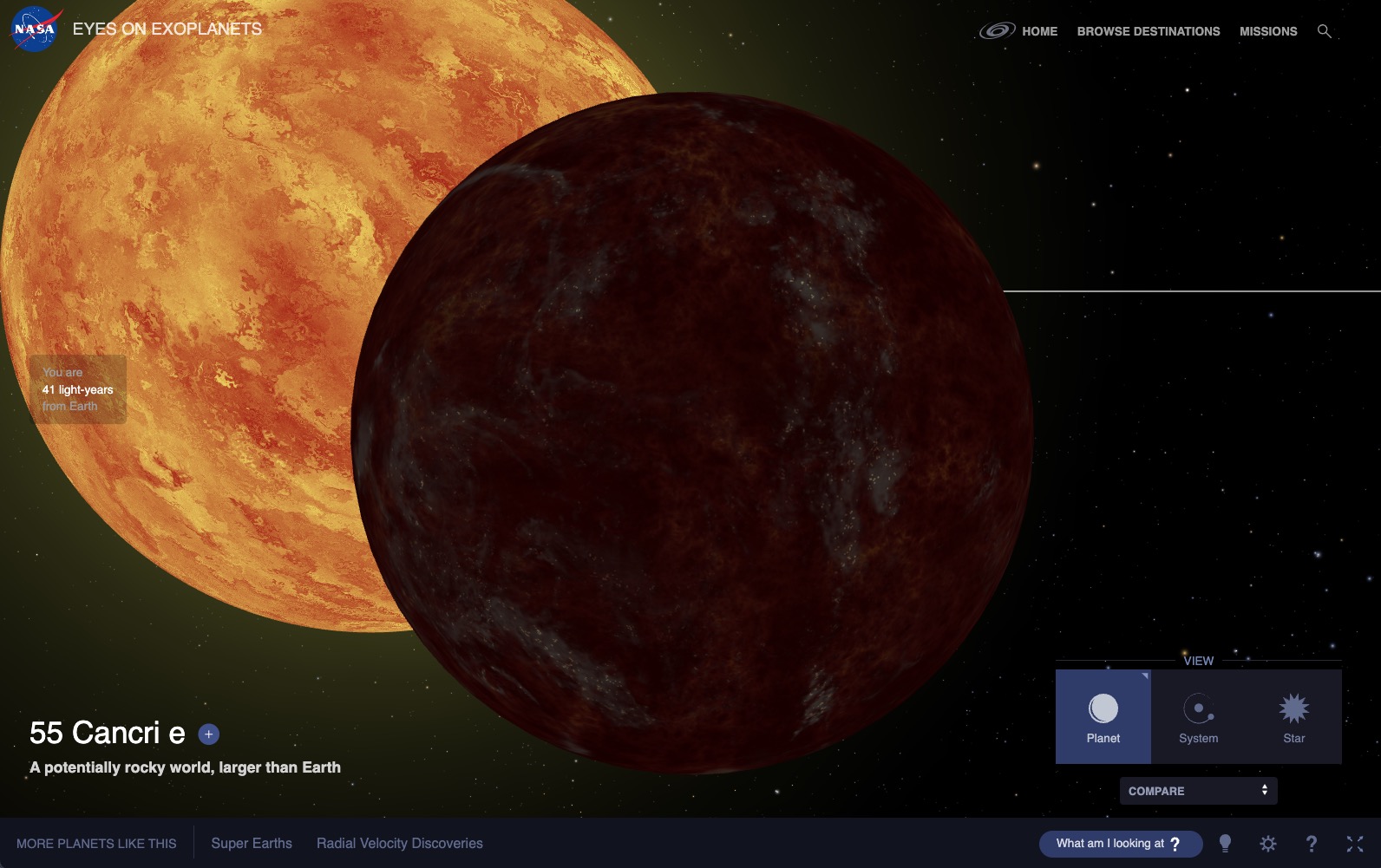Classroom Activity
Presenting With NASA’s Eyes
Overview
In this lesson, students play the role of a NASA public outreach specialist to communicate to their class about NASA’s work. Students will use the same tools that NASA professionals use, practicing the skills of communication and education that are vital to the agency's efforts.
Materials
Management
- Familiarize yourself with the navigation and basic functions of NASA’s Eyes before assigning this project so you can help guide students and answer questions as needed.
- This activity may be done by students working individually or in pairs.
- This activity may be used to address a wide variety of learning standards. If particular learning standards are desired, provide students with topical boundaries.
- Note that Chrome and Firefox are the preferred internet browsers for NASA’s Eyes.
- This lesson may also be done virtually via online web conferencing software.
- Students may use screen-capturing software to record their navigation steps within NASA's Eyes to expedite presentations or create videos of their work.
- To help students improve their presentation skills, consider recording their presentation for their review.
- The NASA's Eyes program can be power-demanding on laptops and tablets. Be sure to charge devices before doing this activity.
Background
NASA’s Eyes is a suite of immersive, real-time web applications designed to allow anyone to explore Earth, our solar system, asteroids, the universe and NASA spacecraft right from their personal devices. Started as a way for mission teams to visualize the activities of distant spacecraft, NASA's Eyes brings this capability to the public. There are several applications within the Eyes suite for exploring different aspects of Earth and space:
Eyes on the Solar System provides a real-time look at the location of planets, moons, asteroids and other solar system objects, as well as spacecraft observing those objects. Students can use keyboard and mouse controls to “fly” around the solar system, zoom in on objects, and learn more about any object that interests them.
Eyes on the Earth focuses on our planet, showing the real-time location of Earth-orbiting satellites and views of data that the satellites have collected. Students can learn about Earth and our changing climate by exploring data visualizations of global temperatures, carbon dioxide concentrations, water storage, sea surface height and more.
Eyes on Asteroids shows the real-time location of asteroids we have identified throughout the solar system, including those classified as near-Earth objects. Students can zoom in on and learn about varying asteroid shapes, orbits, rotation periods and more. They can also learn about the spacecraft that are exploring asteroids.
Eyes on Exoplanets allows students to go on a journey outside our solar system to explore planets that orbit stars other than our Sun. Students will enjoy learning about Earth-like planets and planets that have unusual characteristics such as a global ocean of lava or a density similar to a marshmallow.
All the data in NASA’s Eyes are compiled from real scientific observations. Students can learn about a multitude of topics while exploring the Eyes products.
Eyes is also a useful tool for getting others engaged in NASA's missions. In fact, the web application is often used by NASA employees to share the agency's work with the public. This includes scientists and engineers, who must be able to communicate their knowledge, as well as those whose jobs center around sharing NASA's work with the public.
The role of public outreach specialist or education specialist is one students might not have heard about, even though they are the NASA employees with whom students have most likely interacted. Outreach and education specialists give tours of NASA centers and travel to museums, planetariums, libraries, schools, and beyond to spread the word about NASA missions and science. Most important, they inspire audiences and spark lifelong curiosity by making the agency's work engaging to people of all ages.
In this lesson, students will practice using these same skills along with Eyes to share their knowledge with their peers.
Procedures
Discuss
- Introduce students to NASA’s Eyes web interface. Give them a few minutes to explore the tool on their own as they settle into class.
- Ask students what they know about NASA. For younger students, begin a KWL chart.
- Ask students what questions they have about the work NASA does. What would they like to learn about? Give students a few minutes to think-pair-share with a neighbor and then share with the class. For younger students, add these to the W column on the KWL chart.
- Ask students what types of jobs there are at NASA. Note that almost any job can be found at NASA, though students will often mention astronaut, scientist, engineer, etc. Explain that the NASA workforce includes much more than scientists and engineers, and everyone can find a role in space exploration, no matter their interests and expertise. Other jobs at NASA we might not think of include public outreach, education, and animation and visualization specialists. Ask students why these jobs would be important at NASA.
- If highlighting careers in this lesson, show students some of these NASA people profiles. Some examples of outreach and education specialists include:
- Explain that outreach and education specialists can use Eyes to engage the public in NASA’s exploration. It is also important for scientists and engineers to explain the work that they do, and one of the ways they can do this is by using visualization software such as NASA’s Eyes.
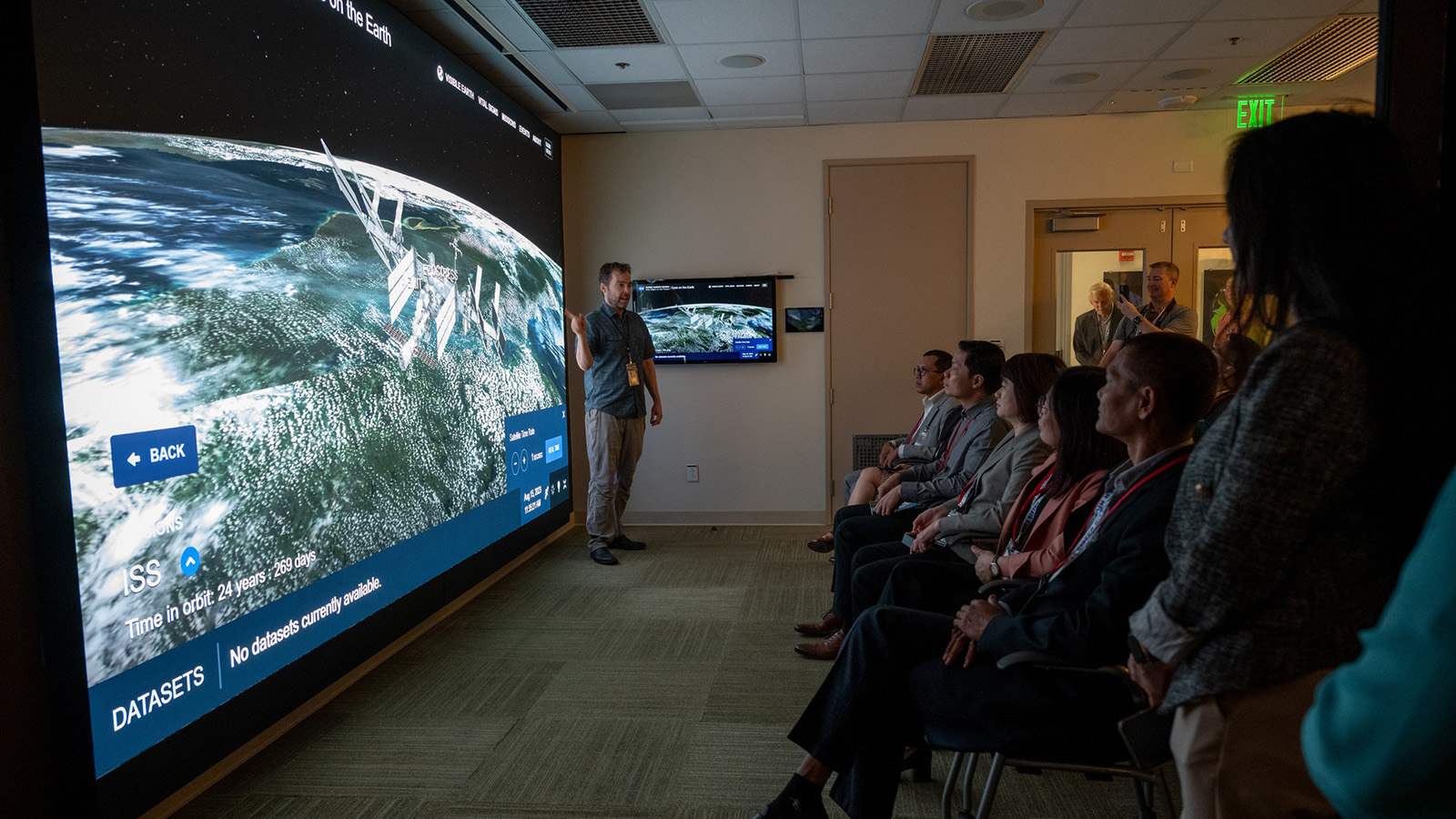
Jason Craig, a technical producer who works on NASA's Eyes, uses Eyes on the Earth during a presentation to a group visiting the agency's Jet Propulsion Laboratory in Pasadena, California. | + Expand image
Explore and Prepare
- Introduce the different applications within the Eyes suite (Solar System, Asteroids, Earth, and Exoplanets), and show students how to navigate the virtual spaces. Show them how to speed up or slow down time and navigate to a particular date and time. For Eyes on the Earth, show them how to reveal different data sets and put the data in motion over a period of time.
- Explain to students that they will be giving a four-minute (or however long you want to provide) presentation on the topic of their choosing. Provide guidelines as appropriate for your students and learning objectives (e.g., have students investigate a particular object, topic, or type of Eyes data, or allow them to choose anything they wish to learn about).
- Give students some time to explore and choose what they want to cover in their presentation.
- Give students time to develop their presentation. Encourage them to plan out visuals, outline talking points, and practice operating Eyes. If students are presenting in pairs, one can pilot Eyes while the other speaks on the topic. Students can trade off roles as desired.
Explain that developing and delivering presentations are iterative processes, similar to the engineering design process, so students should expect to be constantly revising and improving their approach as they prepare. They may even refine their original topic.
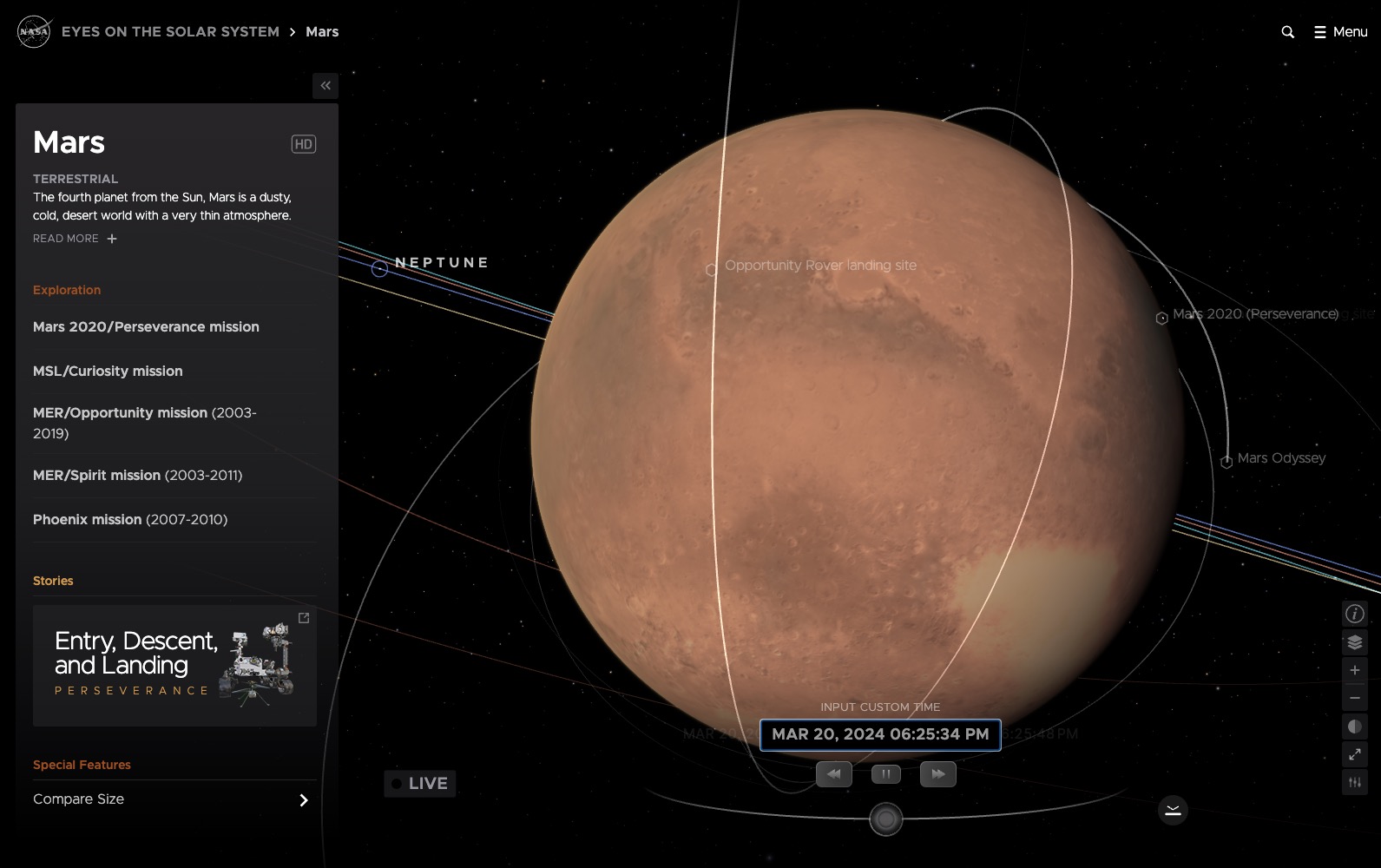
Adjust the time and date within Eyes to get a simulated view of where objects or spacecraft will be in the future or where they traveled in the past. | + Expand image
Present
- Once everyone is ready, have students present their topics to the class. Allow about six minutes per group (four-minute presentation plus two minutes for questions and transitions). Optionally, record the presentations and provide the video files to students for later reflection.
- Invite students to continue learning about and practice using Eyes to engage their family and friends at home and elsewhere. For informal educators, if you use Eyes in exhibits, online, or other programming, now would be the time to highlight that.
- For younger students, revisit the KWL chart and discuss what they learned.
Discussion
Have students discuss what else in Eyes they wish they’d had time to explore and learn more about.
Assessment
- Students should be able to manipulate Eyes to tell a story about something they’ve learned within the time allotted.
- Have students engage in a self-evaluation session in which they reflect on their own experience presenting. Have them reflect on what went well, what they could have done better, and what they would do differently next time. Consider making this a writing assignment.
Extensions
- Have students create scavenger-hunt-type challenges to encourage others to explore Eyes. Share student-created challenges with other classes and/or grades to explore.
- Arrange for students to present again to families, school board members, or at a local library or museum.
- Have students craft an article, poem, short story, song or other piece about something they learned in Eyes.
- In addition to – or instead of – presenting live, challenge students to create a short, NASA-style, educational video. Use a screen-recording program or app to record Eyes sequences as well as any voice-overs, then use a video-editing program to edit the video. Challenge students to enter their video in a competition.
- Have students build their own model of a spacecraft or object using NASA Eyes as a reference. Advanced students can design a model in CAD software and 3D print it.
- Have students embed portions of Eyes on their own website. For example, this code will embed the Voyager spacecraft into any compatible webpage: Note: Students can adjust the “src” URL to embed different objects. Educate students on proper source attribution.





